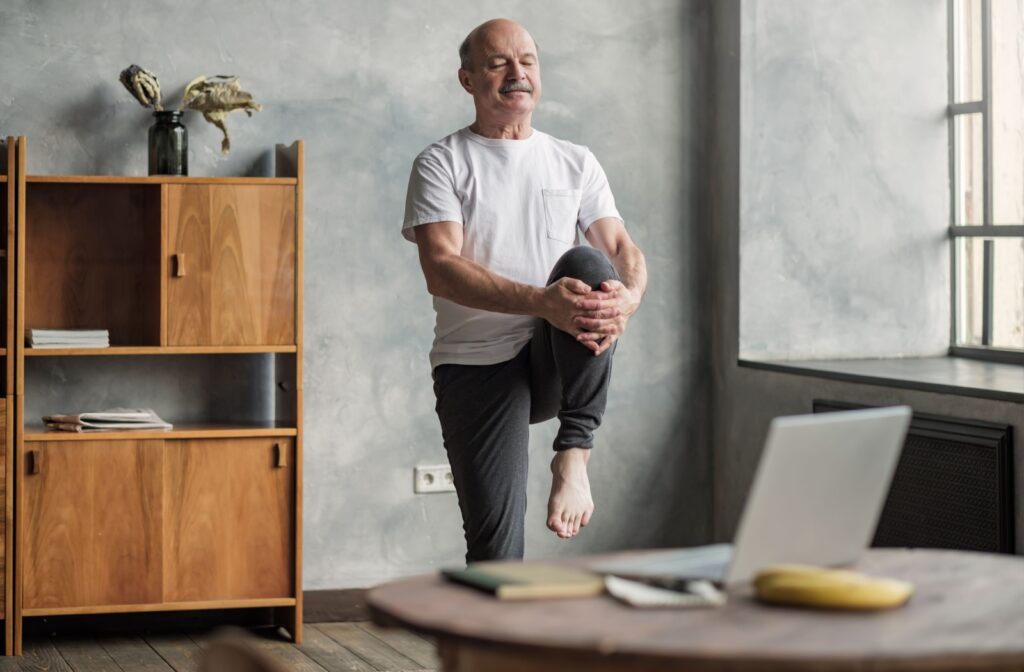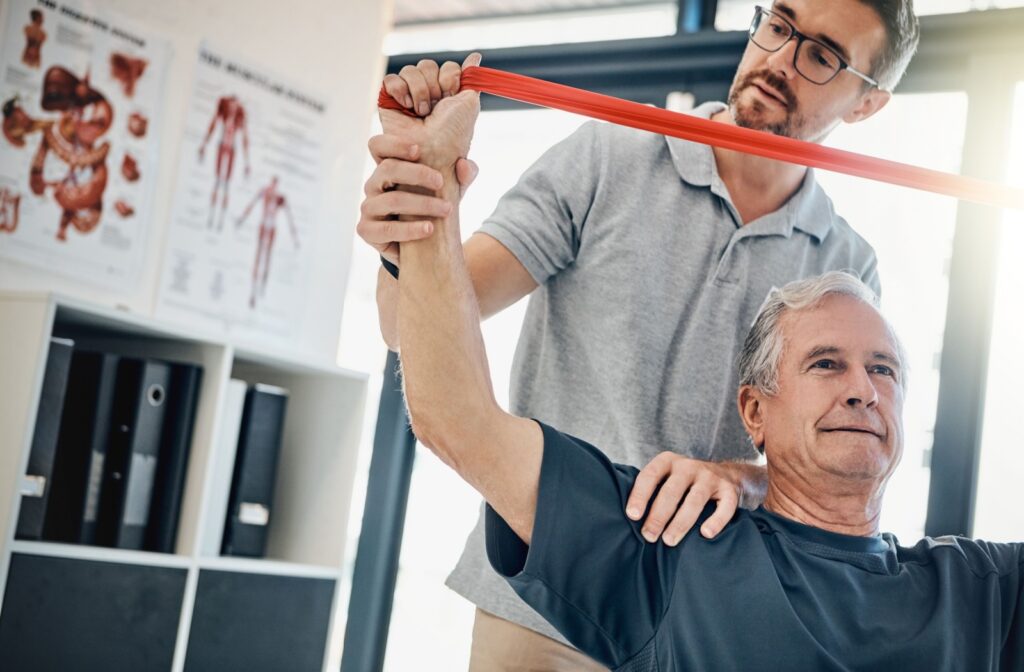Living with arthritis can sometimes feel like a constant battle. But engaging in the right physical activity can help manage arthritis symptoms, enhance mobility, and boost overall well-being. Some great exercises for seniors with arthritis include:
- Low-impact cardio
- Flexibility and range of motion exercises
- Strengthening exercises
There isn’t a single best answer for the right exercise because it ultimately depends on how arthritis affects a senior and their individual ability levels. For example, a senior with debilitating arthritis may only be able to safely perform gentle flexibility training, whereas another senior could safely engage in more rigorous activity.
At the end of the day, some activity is better than no activity, but a person needs to listen to their body to know how much activity is right. This is an area where supportive caregivers can help a senior manage a new exercise routine.
Understanding Arthritis
Arthritis is more than a single ailment—it’s an umbrella term for over 100 different conditions affecting the joints.
The most common types of arthritis that affect seniors are osteoarthritis and rheumatoid arthritis. Osteoarthritis is a degenerative joint disease, often seen as a result of aging, in which the cartilage cushioning the joints wears down.
Meanwhile, rheumatoid arthritis is an autoimmune disorder that causes inflammation in the joints. Both types can lead to pain, stiffness, and reduced mobility.
The Importance of Exercise for Arthritis
Exercise might seem counterintuitive when you’re dealing with joint pain, but it’s one of the most effective ways to manage arthritis without medication. Regular exercise helps reduce stiffness, improve joint function, and strengthen muscles that support the joints.
It also promotes better sleep, reduces anxiety, and boosts mood—benefits that are invaluable for anyone but especially important for those dealing with chronic pain.
Another positive is that exercise aids in maintaining a healthy weight. Excess weight can put additional strain on your joints, particularly the hips, knees, and feet. You can help manage your weight by keeping active, reducing the pressure on these critical areas, and potentially diminishing pain.
Discovering Arthritis-Friendly Activities
There are plenty of beneficial physical activities a person with arthritis can participate in, but here are a few specific examples.
Low-Impact Cardio
Walking is one of the most accessible options. It’s simple, free, and can be done almost anywhere. Start with short distances and gradually increase your pace and duration as you become more comfortable.
Swimming and water aerobics are also excellent choices. The water’s buoyancy supports the body, reducing joint stress and allowing for a greater range of motion. Plus, the water’s resistance provides a gentle strength training effect.
Cycling, especially on a stationary bike, is another great low-impact cardio exercise. It’s gentle on the knees and ankles while still giving your heart a good workout. Whatever activity you choose, aim for at least 150 minutes of moderate aerobic exercise each week.
Flexibility & Range of Motion
Maintaining flexibility and range of motion is crucial for those with arthritis. Gentle stretching exercises can help keep your joints flexible and reduce stiffness. Yoga and tai chi are both fantastic for improving flexibility and balance.
Yoga combines physical postures with breathing exercises and meditation, offering a holistic approach to wellness. Look for classes specifically designed for seniors or those with arthritis. These classes typically focus on gentle movements and modifications.
Tai chi is a form of martial arts that involves slow, deliberate movements. It’s often described as “meditation in motion.” Tai chi is particularly beneficial for improving balance and coordination, which can often translate into improved joint function.

Strengthening Exercises
Building muscle strength is vital to support and protect your joints. Strong muscles help absorb some of the stress that would otherwise be placed on your joints. Focus on exercises that target major muscle groups, including the legs, back, abdomen, and arms.
Resistance bands and light weights are great tools for strength training. They allow you to gradually increase resistance as you get stronger. Start with movements like seated leg extensions and bicep curls, and aim for two strength training sessions per week. Bodyweight exercises like squats (supported with a chair if needed) and wall push-ups are also effective.
Practical Tips for Getting Started
There are always some things to consider when beginning a new exercise routine.
Start Slow, Progress Gradually
If you’re new to exercise, start slowly. Begin with short sessions, even just 5 to 10 minutes daily. Consistency is more important than intensity at the beginning. Gradually increase the duration and intensity of your workouts as your body adapts, and strength improves.
Keeping an exercise log can help you track your progress and stay motivated. Celebrate small victories and keep building on them.
Safety First
Exercise should never hurt. Stop and consult with a healthcare professional if you experience pain during or after exercise. It’s crucial to wear supportive shoes and use safety equipment like handrails if needed.
Consider working with a physical therapist or a trainer experienced in arthritis-friendly exercises. They can help create a personalized exercise plan that suits your specific needs and abilities.
Listen to Your Body
Your body is your best guide. Pay attention to how it responds to different exercises. Some days, you might feel great, while others might require a more gentle approach. Balancing activity with rest is essential, especially if you’re experiencing a flare-up.
Staying Active During Retirement
Exercise is a powerful tool in managing arthritis for seniors. Incorporating low-impact cardio, flexibility exercises, and strength training into your routine can improve joint function, reduce pain, and maintain a comfortable quality of life. Remember, the goal is to enjoy movement and make it a regular part of your life.One incredible benefit of a supportive senior living community is the assistance that can be available when a senior wants to improve and maintain their health through physical activity. Call our team at Fieldstone at Chester Springs to book a community tour. We’d love to show you the support our compassionate team can provide your loved one.





